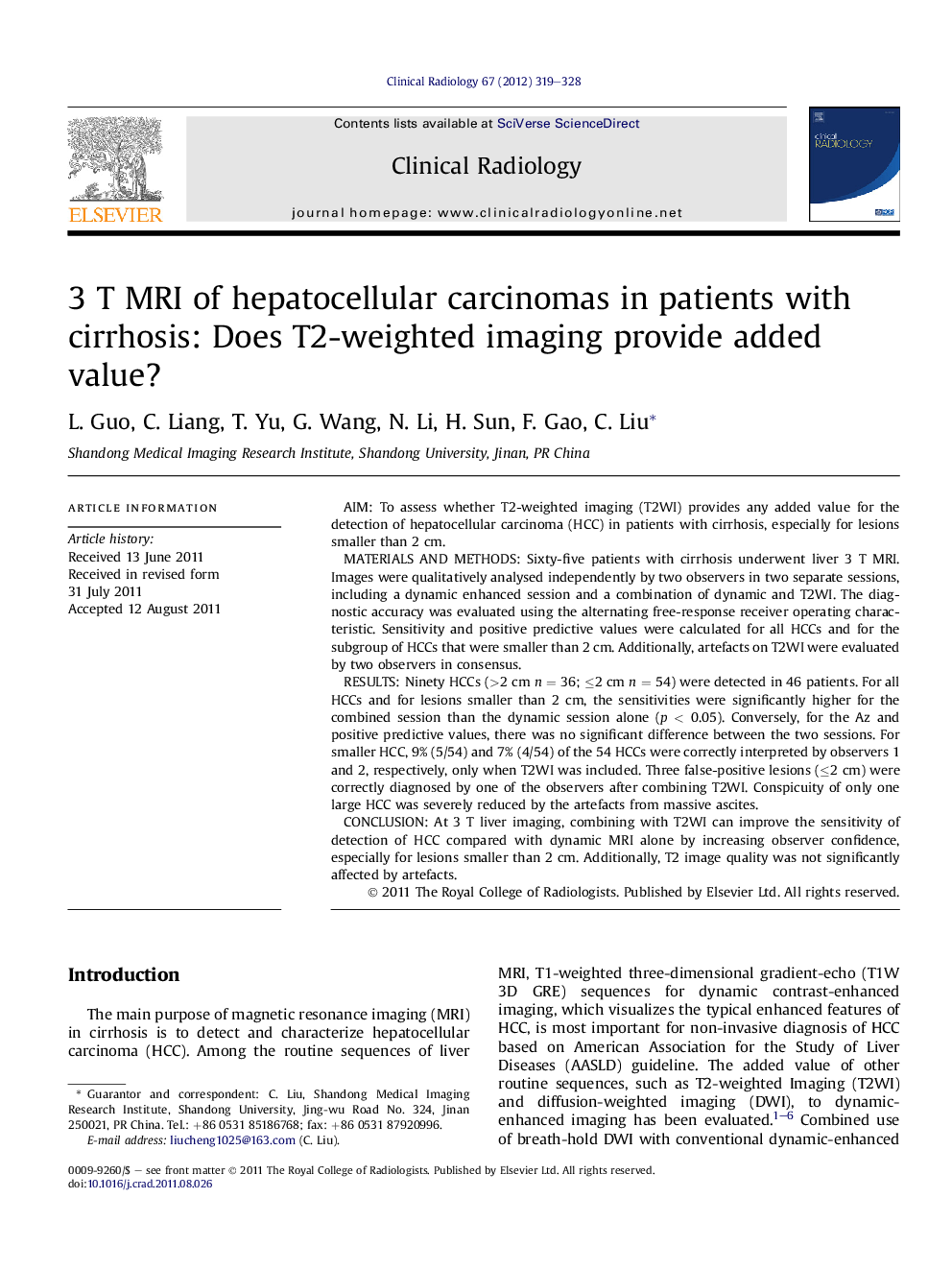| Article ID | Journal | Published Year | Pages | File Type |
|---|---|---|---|---|
| 3982096 | Clinical Radiology | 2012 | 10 Pages |
AimTo assess whether T2-weighted imaging (T2WI) provides any added value for the detection of hepatocellular carcinoma (HCC) in patients with cirrhosis, especially for lesions smaller than 2 cm.Materials and methodsSixty-five patients with cirrhosis underwent liver 3 T MRI. Images were qualitatively analysed independently by two observers in two separate sessions, including a dynamic enhanced session and a combination of dynamic and T2WI. The diagnostic accuracy was evaluated using the alternating free-response receiver operating characteristic. Sensitivity and positive predictive values were calculated for all HCCs and for the subgroup of HCCs that were smaller than 2 cm. Additionally, artefacts on T2WI were evaluated by two observers in consensus.ResultsNinety HCCs (>2 cm n = 36; ≤2 cm n = 54) were detected in 46 patients. For all HCCs and for lesions smaller than 2 cm, the sensitivities were significantly higher for the combined session than the dynamic session alone (p < 0.05). Conversely, for the Az and positive predictive values, there was no significant difference between the two sessions. For smaller HCC, 9% (5/54) and 7% (4/54) of the 54 HCCs were correctly interpreted by observers 1 and 2, respectively, only when T2WI was included. Three false-positive lesions (≤2 cm) were correctly diagnosed by one of the observers after combining T2WI. Conspicuity of only one large HCC was severely reduced by the artefacts from massive ascites.ConclusionAt 3 T liver imaging, combining with T2WI can improve the sensitivity of detection of HCC compared with dynamic MRI alone by increasing observer confidence, especially for lesions smaller than 2 cm. Additionally, T2 image quality was not significantly affected by artefacts.
